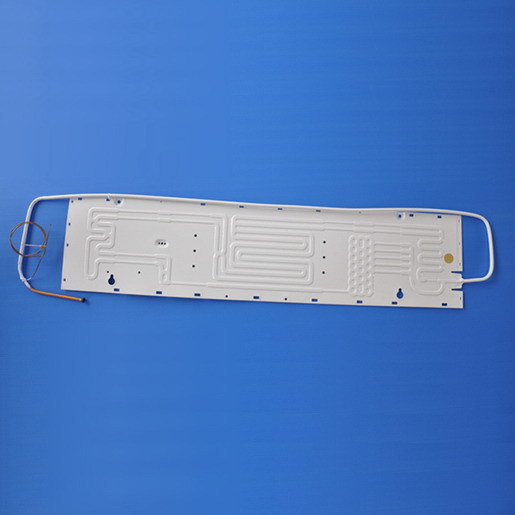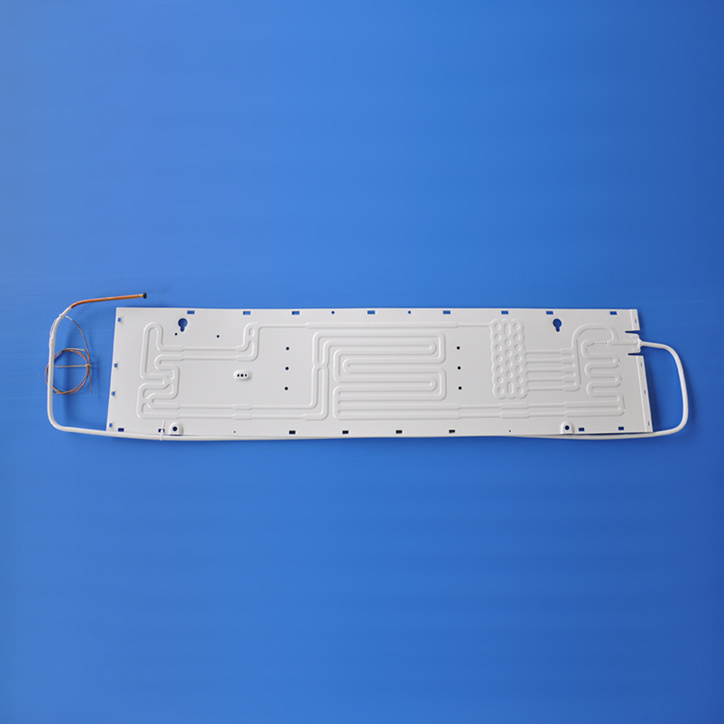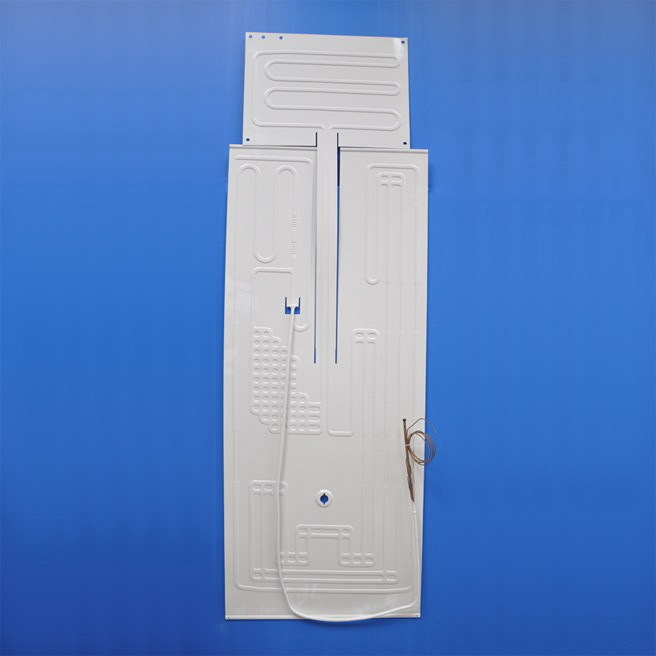The Role of Aluminum Fin Evaporators in Industrial Heat Transfer Systems
The Role of Aluminum Fin Evaporators in Industrial Heat Transfer Systems Introduction to Industrial Heat Transfer Systems In the realm of industrial manufacturing and processing, heat transfer is a critical component that influences efficiency and productivity. **Heat exchangers**, including **evaporators**, facilitate the transfer of heat from one medium to another, ensuring that processes operat
Published:
2025-07-23
source:
author:
The Role of Aluminum Fin Evaporators in Industrial Heat Transfer Systems
Introduction to Industrial Heat Transfer Systems
In the realm of industrial manufacturing and processing, heat transfer is a critical component that influences efficiency and productivity. **Heat exchangers**, including **evaporators**, facilitate the transfer of heat from one medium to another, ensuring that processes operate within optimal thermal ranges. Among the various types of evaporators, **aluminum fin evaporators** stand out due to their unique design and excellent thermal performance.
Understanding Aluminum Fin Evaporators
Aluminum fin evaporators are specialized components used in numerous industrial applications. They consist of a series of fins made from aluminum, which enhance the surface area available for heat exchange. This allows for improved thermal conductivity and more efficient cooling or heating processes.
Benefits of Using Aluminum in Evaporators
The utilization of aluminum in fin evaporators provides several advantages:
1. Lightweight and Corrosion-Resistant
Aluminum is inherently lighter than many other metals, which reduces the overall weight of the equipment. Additionally, aluminum exhibits excellent corrosion resistance, making it ideal for applications involving moisture or corrosive substances.
2. Enhanced Thermal Conductivity
Aluminum's thermal conductivity is significantly higher than that of other metals, allowing for more efficient heat transfer. This property is crucial in applications where rapid temperature changes are required.
3. Cost-Effectiveness
Aluminum is often more affordable than copper or stainless steel, making it a cost-effective solution for manufacturers aiming to reduce expenses without compromising quality.
Applications of Aluminum Fin Evaporators in Industrial Settings
Aluminum fin evaporators are widely used across various industries due to their versatility and efficiency. Key applications include:
1. HVAC Systems
In heating, ventilation, and air conditioning (HVAC) systems, aluminum fin evaporators play a vital role in regulating temperatures and ensuring comfort in commercial and industrial environments.
2. Refrigeration Systems
Industrial refrigeration relies heavily on evaporators to remove heat from refrigerants. The lightweight nature and high heat transfer efficiency of aluminum fins make them ideal for both large-scale and localized refrigeration needs.
3. Process Cooling
Manufacturing processes, especially those involving chemicals, often generate excess heat. Aluminum fin evaporators are employed to cool down these processes, ensuring optimal performance and preventing equipment damage.
Design Features of Aluminum Fin Evaporators
The efficiency and performance of aluminum fin evaporators are significantly influenced by their design features. Understanding these components can aid in selecting the appropriate evaporator for specific industrial needs.
1. Fin Design and Configuration
The design of the fins, including their spacing, thickness, and surface area, is crucial for maximum heat transfer. Different configurations may be employed based on specific thermal requirements, airflow, and space constraints.
2. Tube and Fin Connections
The way fins are connected to the tubes can impact thermal performance. Options include mechanical bonding, brazing, or adhesive bonding, each with its own set of advantages and applications.
3. Airflow Dynamics
Proper airflow is essential for optimizing the performance of aluminum fin evaporators. Designs that promote laminar flow reduce resistance and improve heat transfer efficiency.
Maintenance Tips for Aluminum Fin Evaporators
To ensure the longevity and performance of aluminum fin evaporators, regular maintenance is essential. Here are some key maintenance tips:
1. Regular Cleaning
Dust and debris can accumulate on the fins, obstructing airflow and reducing efficiency. Regular cleaning, either through manual methods or using high-pressure air jets, helps maintain optimal performance.
2. Inspection for Damage
Routine inspections can help identify wear and tear, corrosion, or physical damage. Early detection allows for timely repairs, preventing larger issues down the line.
3. Monitoring Performance
Keep track of the evaporator's performance metrics, such as temperature differentials and pressure levels. Any significant deviations from normal operating ranges may indicate a need for maintenance or replacement.
Challenges and Solutions in Using Aluminum Fin Evaporators
While aluminum fin evaporators offer many advantages, they also present some challenges that need to be addressed.
1. Thermal Expansion
Aluminum has a higher coefficient of thermal expansion compared to other metals. This characteristic can lead to issues if not properly accounted for in the design phase. Implementing flexible joints or expansion fittings can mitigate this concern.
2. Potential for Corrosion in Harsh Environments
Even though aluminum is corrosion-resistant, certain environments may still pose risks. Employing protective coatings or selecting alloys with enhanced corrosion resistance can help prolong the lifespan of the evaporators.
3. Fin Efficiency vs. Air Resistance
Designing fins with a high surface area for improved efficiency can sometimes lead to increased air resistance. Striking a balance between fin efficiency and airflow is vital to maintain overall system performance.
Future Trends in Aluminum Fin Evaporator Technology
As industrial demands evolve, so too does the technology behind aluminum fin evaporators. Key trends to watch for include:
1. Enhanced Efficiency Designs
New design methodologies, including computational fluid dynamics (CFD) simulations, are paving the way for more efficient evaporator designs that optimize airflow and heat transfer.
2. Advanced Coatings
The development of new coatings that enhance corrosion resistance while maintaining thermal conductivity can significantly improve the performance and longevity of aluminum fin evaporators.
3. Integration with IoT Technologies
The integration of Internet of Things (IoT) technologies allows for smarter monitoring and management of evaporator performance. Real-time data collection can lead to proactive maintenance and efficiency improvements.
Conclusion
Aluminum fin evaporators are integral components of industrial heat transfer systems, offering a blend of lightweight design, cost-effectiveness, and superior thermal performance. By understanding their design features, applications, and maintenance requirements, industries can leverage their benefits to optimize processes and enhance efficiency. As technology continues to evolve, aluminum fin evaporators will likely play an even more prominent role in shaping the future of industrial heat transfer systems. Embracing best practices in maintenance and staying informed about emerging trends will ensure these systems operate at peak performance for years to come.
Frequently Asked Questions (FAQs)
1. What is the primary function of aluminum fin evaporators?
Aluminum fin evaporators primarily facilitate heat transfer by removing heat from refrigerants in various industrial applications, such as HVAC and refrigeration systems.
2. How do aluminum fin evaporators improve energy efficiency?
Their lightweight design and enhanced thermal conductivity allow for quicker heat exchange, reducing energy consumption and operational costs in industrial systems.
3. What maintenance practices are essential for aluminum fin evaporators?
Regular cleaning, routine inspections for damage, and monitoring performance metrics are vital maintenance practices to ensure optimal functionality.
4. Can aluminum fin evaporators be used in corrosive environments?
While aluminum is corrosion-resistant, certain harsh environments may require protective coatings or specialized alloys to enhance durability.
5. What future innovations can we expect for aluminum fin evaporators?
Emerging trends include advanced coatings for improved durability, enhanced design methodologies for efficiency, and the integration of IoT technology for better monitoring and maintenance.
Hot News
Mobile website

language
English
العربية
বাংলাদেশ
Български
Hrvatski
Česky
Dansk
Nederland
 Esperanto
Esperanto
Slovenski
Filipino
Suomi
Français
Maori
 Shqiptare
Shqiptare
Georgian
 Euskara
Euskara
Deutsch
Ελλάδα
ישראל
इंडिया
Magyarország
Ísland
Indonesia
Irlanda
Italia
日本語
Sovensko
Հայաստան
한국
Kyrgyz
ປະເທດລາວ
 Zulu
Zulu
Latvian
Lithuanian
Luxembourgish
 Latinus
Latinus
Macedonian
Малайская
Maltese
Монгол улс
 Cymraeg
Cymraeg
ဗမာ
 தமிழ்
தமிழ்
नेपाल
Norge
ایران
Polska
Portugal
România
Российская
Србија
 Slovak
Slovak
Србија
 Slovak
Slovak
Bosanski
Slovenian
Беларус
España
Sverige
Точик
ประเทศไทย
Türk
Azərbaycan
Uzbek
 Afrikaans
Afrikaans
Việt Nam
Tel: 0086-13775291367
E-mail: michael@xinxincool.com
ADD:No. 32 Tianshan Road, Xinqiao Town, Xinbei District, Changzhou City, Jiangsu Province
Copyright © 2024 Changzhou Xinxin Refrigeration Equipment Co., Ltd.





